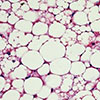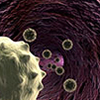Ants have farmed fungi for 66 million years, according to new work in the journal Science. It’s a relationship that flourished after the demise of the dinosaurs, says Ted Schultz of the Smithsonian.
JUANA SUMMERS, HOST:
Agriculture is not a uniquely human endeavor. More than 20 lineages of animals farm, including termites, beetles and, perhaps most famously, the ants. Ants are prolific fungus farmers. Hundreds of ant species do it. A study out in the journal Science investigates the evolutionary origins of ant agriculture and estimates that it originated around 66 million years ago in the aftermath of the huge asteroid collision which dealt a death blow to the dinosaurs. Ted Schultz is the lead author on that paper and a research entomologist at the Smithsonian’s National Museum of Natural History. And he joins us now in studio. Welcome, Ted.
TED SCHULTZ: Thank you. It’s really great to be here.
SUMMERS: Ted, I know neither one of us were alive 66 million years ago, but if you could just take us back there, what happened after this giant asteroid hit, which may have set the stage for ants to start farming fungi?
SCHULTZ: Yeah, I wish I had a time machine and could go back and directly observe it. But since we can’t do that, we have to use other forms of indirect evidence. And what happened was an asteroid hit the Earth. It sent up a bunch of ejecta into the atmosphere. This put a stop to photosynthesis for a period of time from months to years. It drove a whole lot of organisms to extinction.
But what was one organism’s cataclysm turned out to be other organisms’ golden opportunity. And at that time, a lot of plants died because of the lack of photosynthesis. A whole bunch of plant debris accumulated. The fungi that digest those plant debris proliferated, and we know this from the fossil record. And meanwhile, there were ants that lived in the leaf litter, and they were already sort of preassociated with some of these fungi, and they joined together into an alliance. And that’s how ant agriculture got started.
SUMMERS: Now, I understand that you have taken dozens of trips to Central and South America to see ant fungus gardens in action and that you’ve also cultivated your own ant farms, too. So I’m hoping you can just paint a picture for us of what ant agriculture actually looks like.
SCHULTZ: Well, yes, I’ve dug up hundreds or maybe thousands of ant – fungus-farming ant nests in the tropics. That partly accounts for all of the samples that we had to use in this study. But in the wild, if you dig them up, you find an ant nest, you dig a hole in the ground, eventually you break into a chamber, and in that chamber is a fungus garden. It looks like a sort of white spongy garden.
And what the ants are doing is they’re going out, they’re gathering organic detritus, they’re bringing it in, they’re planting the fungus on that detritus, then they’re patrolling the gardens, weeding them, physically removing unwanted bacteria and fungi. But they’re also applying antibiotics to control these unwanted microbes. And these antibiotics are produced by bacteria that grow on their bodies. And most remarkably, when a daughter queen leaves her mother’s nest to fly and start her own new colony and mate, she brings along with her a little bit of her mother’s garden in a special pouch in her mouth and uses that to start her new garden.
SUMMERS: I have to say, Ted, listening to you talk, you make these ants seem pretty incredible, though I feel like people don’t give them a lot of credit. They see them more as a nuisance when they’re stealing things from your pantry or running into that sticky stuff in your kitchen sometimes. But your research really makes clear that there’s a lot more going on that maybe we don’t talk about. What do you think that we as a society can learn from studying ant agriculture?
SCHULTZ: Well, humans have been practicing agriculture for about 12,000 years. Humans have been using antibiotics for less than 100 years. Ants have been practicing agriculture for 66 million years, and they’ve been using antibiotics for most of that time. Another thing is that ants have been growing monocultures for 66 million years. These are clonally propagated gardens. If we knew how ants have been able to avoid antibiotic resistance for all of this time and if we also knew how they’ve been successfully able to grow monocultures for all of this time, I just can’t imagine that wouldn’t help to inform human agricultural strategies.
SUMMERS: That was Ted Schultz, research entomologist at the Smithsonian’s National Museum of Natural History. Ted, thank you.
SCHULTZ: Thank you very much.
Copyright © 2024 NPR. All rights reserved. Visit our website terms of use and permissions pages at www.npr.org for further information.
NPR transcripts are created on a rush deadline by an NPR contractor. This text may not be in its final form and may be updated or revised in the future. Accuracy and availability may vary. The authoritative record of NPR’s programming is the audio record.





